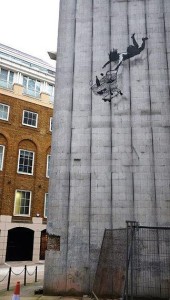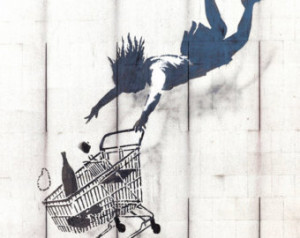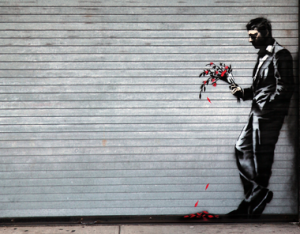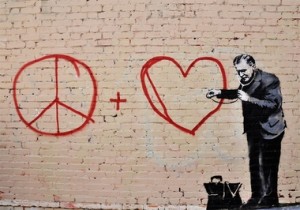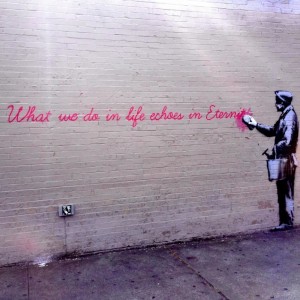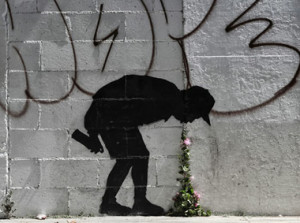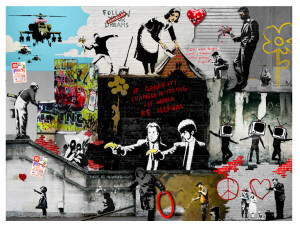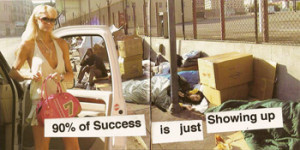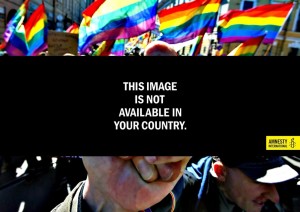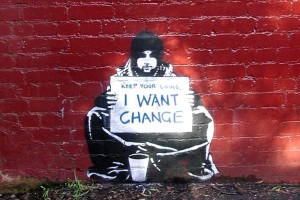BREAKING NEWS!! Banksy’s identity has been revealed. But then again, it has been “revealed” several times. In 2014, Banksy was arrested, however, it turned out to be a giant hoax. Then, it circulated that Banksy’s real name is Paul Horner, but you guessed it, another hoax. Several theories have been brought to the table. Banksy is a woman. Banksy is a group of seven street artists. And now, Banksy’s real name is Robin Gunningham.
Robin Gunningham was a student at the public Bristol Cathedral School, supposedly the school Banksy attended as a child. This year, a study was done that examined the locations where Banksy’s artwork has appeared. The locations correlate with the known movements of Gunningham. However, nothing has been confirmed.
I don’t know if I want to ever know the true identity of Banksy. I think his anonymity makes his work more powerful. He is not in it for the fame or the fortune. He is simply trying to better our society. I believe that if his identity was revealed, his artwork would be overshadowed by the stardom. Of course I am extremely curious, but I think that is what draws me to his art.
With the school year coming to a close, I was trying to figure out a way to wrap up this blog about Banksy. However, I am at a loss….because there is no end to Banksy. He will forever be relevant and present, at least in my eyes. Although the topics he challenges may fade, his legacy will live on. He is willing to cause controversy. He makes people think and talk about issues that are commonly shied away from. Whether you see his pieces as art or vandalism, there is no denying the powerful deeper meanings. Although my blogs have reached there end, my love for Banksy will live on.


